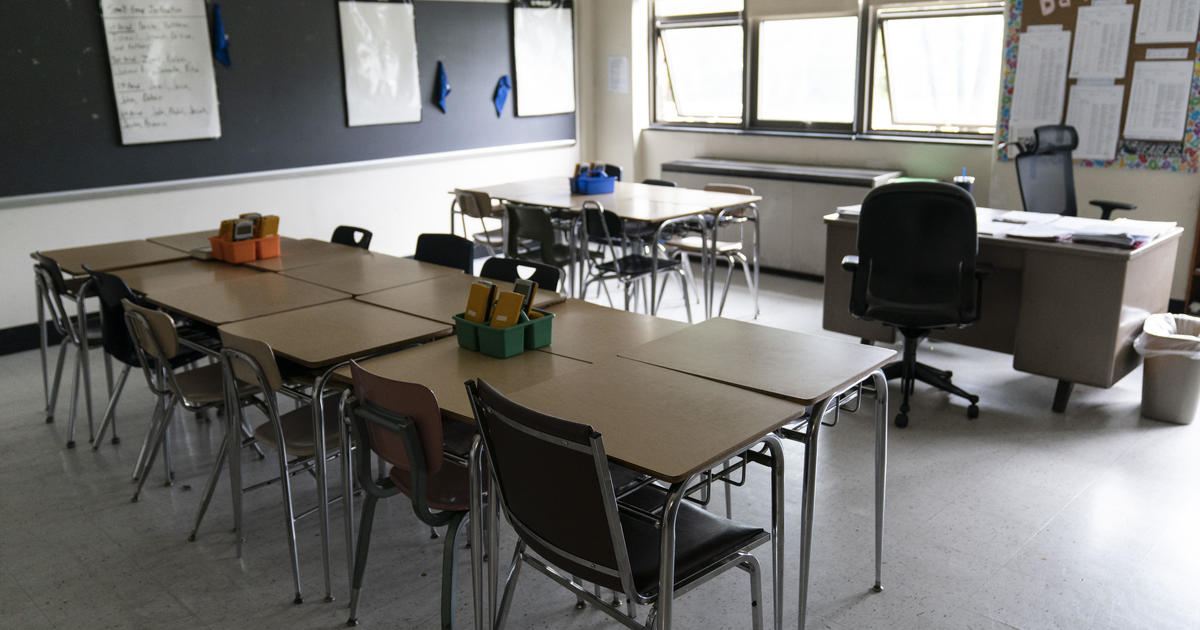American Lung Association report puts Pittsburgh area among worst for air quality
Pittsburgh (KDKA) - The Pittsburgh area remains among the worst metropolitan areas for air quality, according to the American Lung Association's newly released "State of the Air" report.
There was good and bad news about the air we breathe in the new report.
Kevin Stewart, Director of Environmental Health for the Lung Association, told KDKA the data shows there's a lot of work that needs to be done in the Pittsburgh metropolitan area to improve air quality.
It's not uncommon to have bad air quality on a beautiful day in the Pittsburgh area.
"Just this morning, parts of Allegheny County topped the EPA's list for worst air quality in the country right now," said Zachary Barber, clean air advocate with PennEnvironment.
KDKA's Jessica Guay read through the American Lung Association's 'State of the Air 2023,' which covers 2019-2021.
The Pittsburgh metro area, Pittsburgh-New Castle-Weirton, PA-OH-WV, ranked 20th worst and received an F grade for short-term particle pollution. It was also the 14th most polluted for year-round particle pollution, but still met air quality standards.
Particle pollution comes from sources like power plants, industries, diesel emissions, wildfires, and wood-burning. Stewart said fine particle pollution can be dangerous for people's health and can even be deadly.
"We've seen this trend of getting worse values in fine particles, which is definitely not the direction we want to be going," Stewart said.
Stewart was happy to see a breath of fresh air in the report.
The Pittsburgh area received its first overall passing grade for ozone pollution, moving from an F grade to C and improving from 46th to 54th most polluted by ozone smog.
The Lung Association attributed improvements to the Clean Air Act.
Air quality advocates, including Barber, said they are still concerned.
"I hope that our air pollution will continue to improve but unfortunately, what stood out more is that we continue to rank among the worst in the country," Barber said.
Ken Zapinski, director of research and policy with the business-labor coalition, Pittsburgh Works Together, questions the report. Their statement reads in part, "Allegheny County and the entire Pittsburgh region met federal air quality standards for tiny pollutant particles (PM2.5) and ozone for 2019-2021, the period covered by the ALA's State of the Air report. Yet the Lung Association tries to portray the region as having some of the worst air in the country, a finding that is contradicted by data in its own report."
Zapinski also said, "Every year, the people of southwestern Pennsylvania read and hear the same inaccurate assessments of air quality in our region. You cannot solve problems when you don't deal in facts."
Meanwhile, the Lung Association and local air quality advocates are calling on the Biden Administration to take action.
"We're asking the Biden Administration to put in place stronger controls on air pollution. One of the things we've been working on for the past decade or more has been the idea of making sure that the air quality standards against which we're measuring are properly protected for health. Right now, they are too weak, there are many that quote-on-quote pass the air quality standards but that are really affecting people's health," Stewart said.
"What we need is our leaders to step up to the plate and reign in the industrial sources of pollution, that way we're not all getting text alerts and weather alert apps about the air pollution levels," Barber said.
Stewart said high-risk groups include children and older adults, people with underlying health conditions, pregnant women, people of color, and people living in poverty.
The report said Allegheny County was the 25th most polluted county for year-round particle pollution and received an F grade for short-term particle pollution.
"Our region continues to experience too many bad air days. This pollution is harmful to all of our region's residents. Despite U.S. Steel's shutting down three highly polluting batteries recently, our region still experiences these bad air day episodes, so what is documented in the report, unfortunately, appears to be continuing into the present, and the situation is not acceptable," said Matt Mehalik, Director of Breathe Project.
"These results are disappointing, and our county needs to take some serious corrective action to limit exposure to both short and long-term PM2.5. The results show unacceptable levels of short-term PM2.5. Even though we received a D for the long-term PM2.5, experts recognize that the current standard for this parameter is not protective of public health. The EPA is expected to announce in the near future that the long-term PM2.5 threshold will be decreased to 8-10. As such, we will again be out of compliance for this parameter and exposing residents to levels of PM2.5 that are known to increase death and disease severity," said Dr. Deborah Gentile, Community Partners in Asthma Care, pediatrician.
The report said that ozone pollution has generally improved across the nation, but short-term particle pollution got worse.
The Lung Association's full report and petition can be found on their website.




